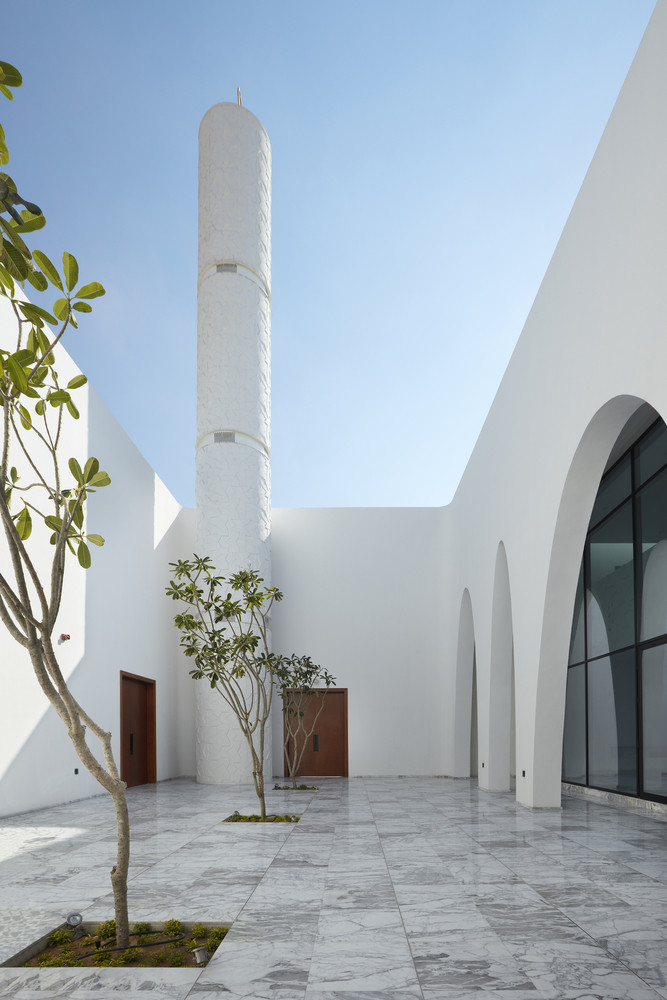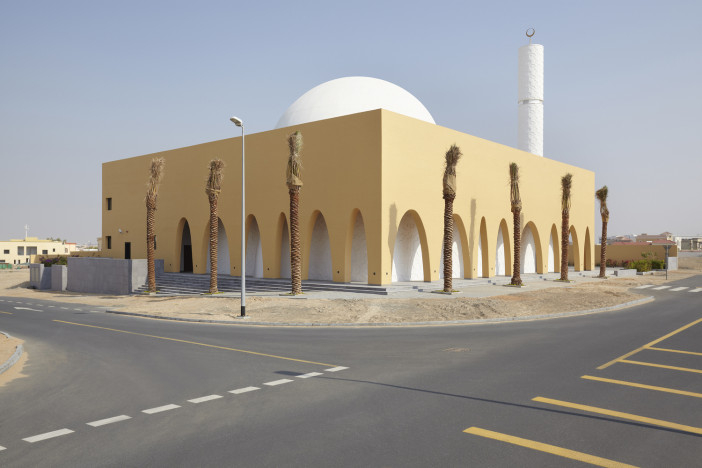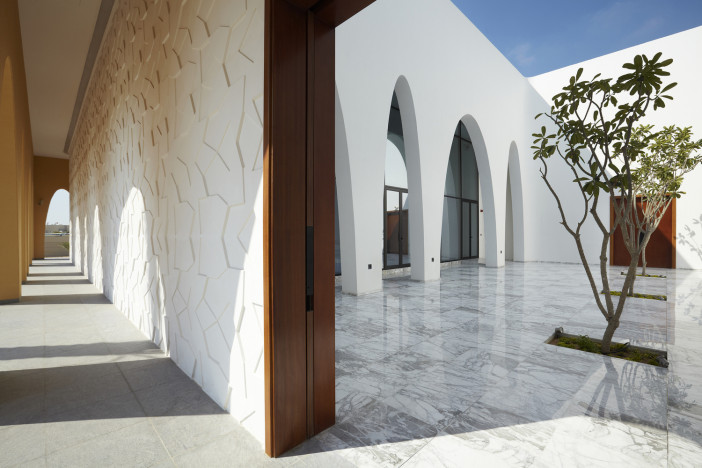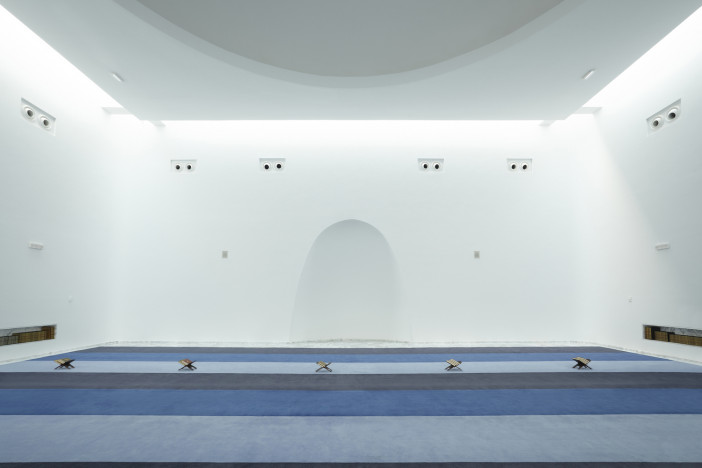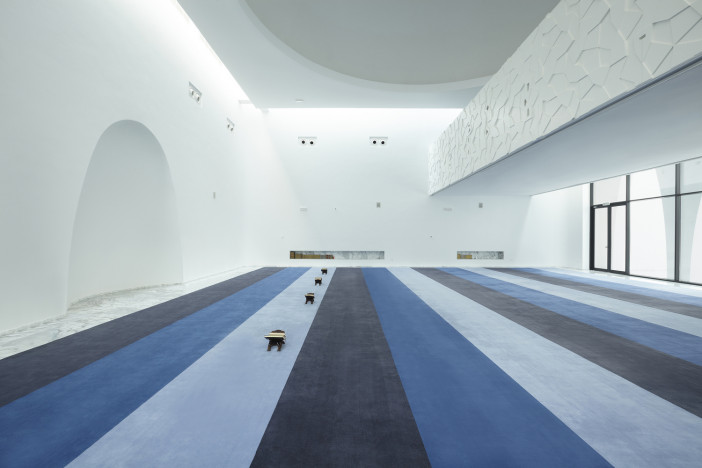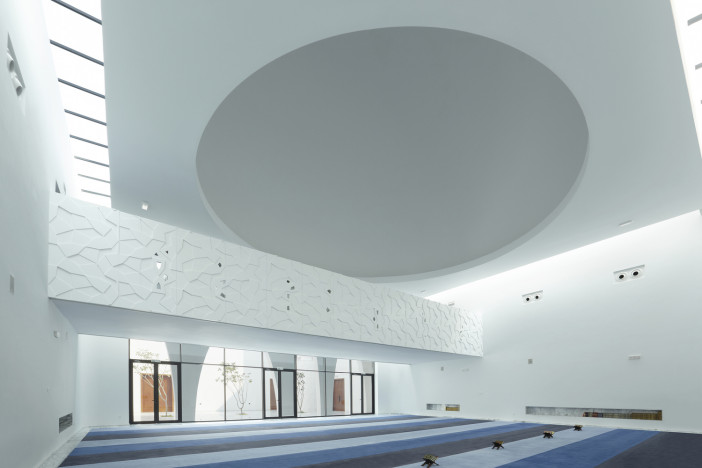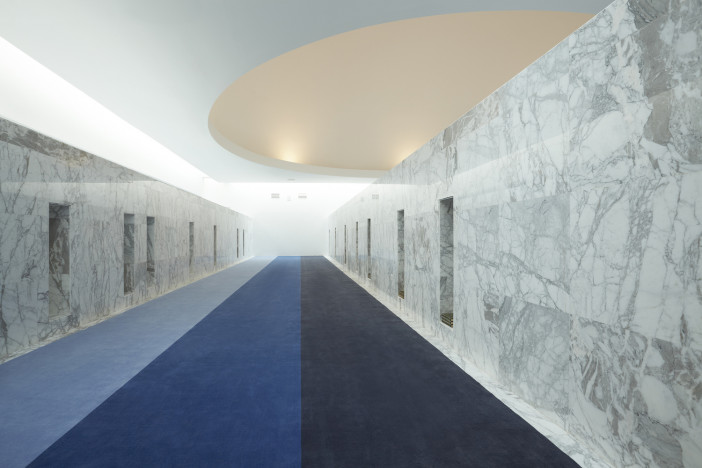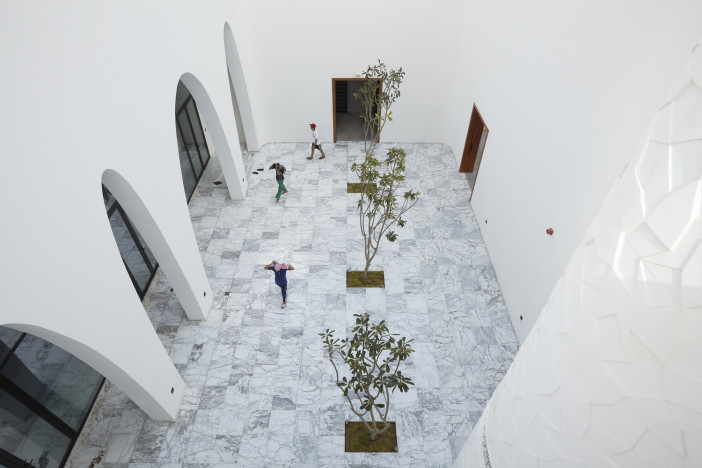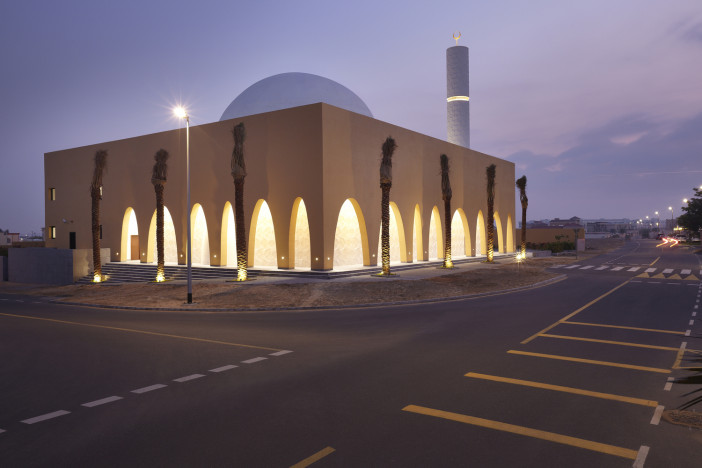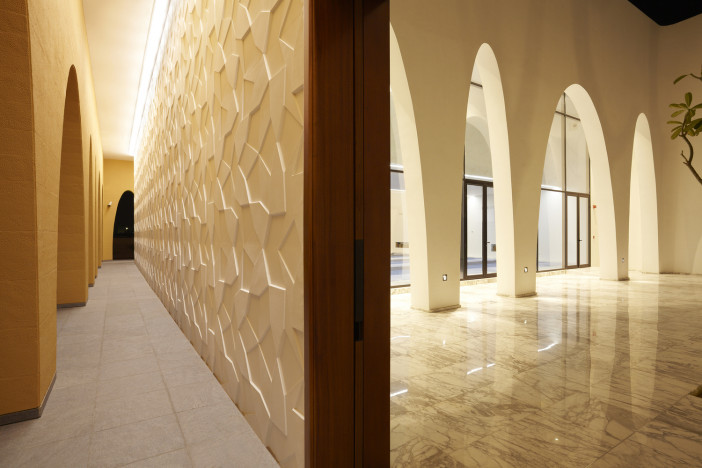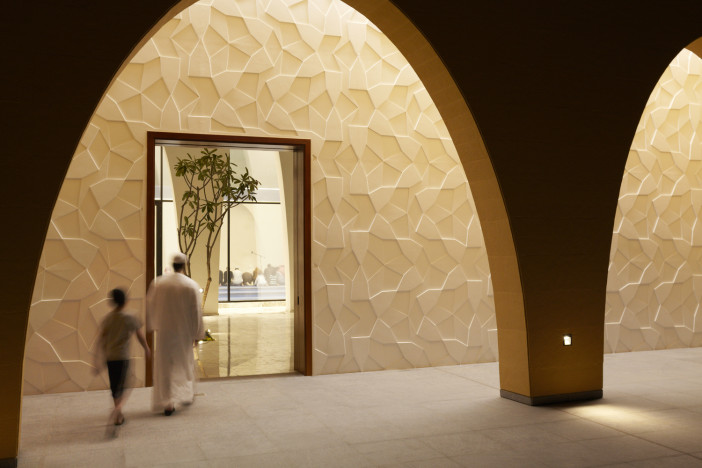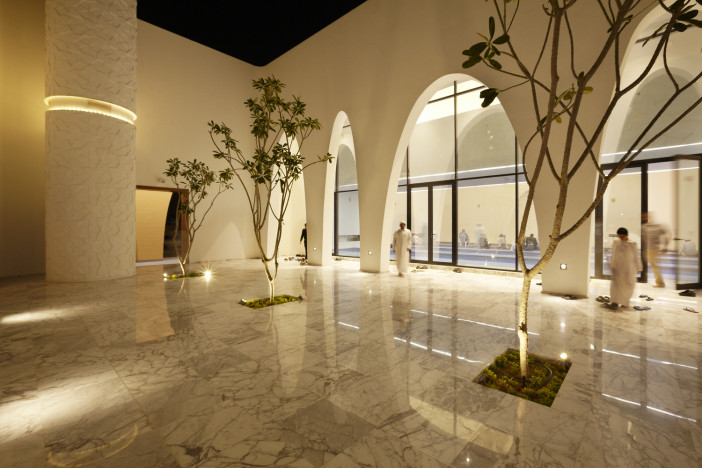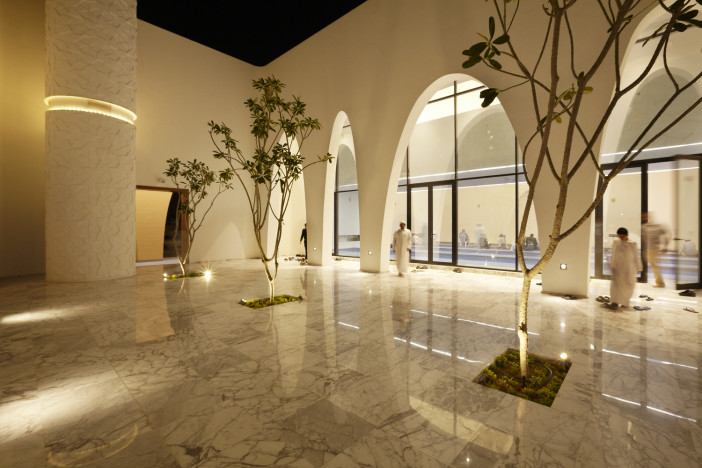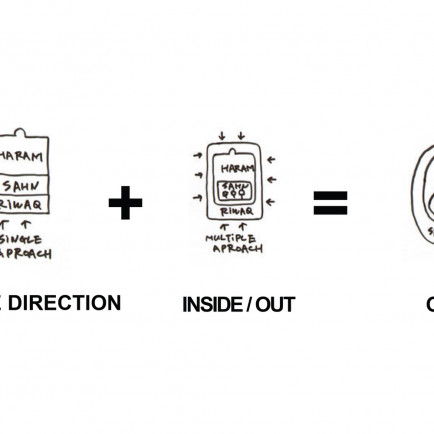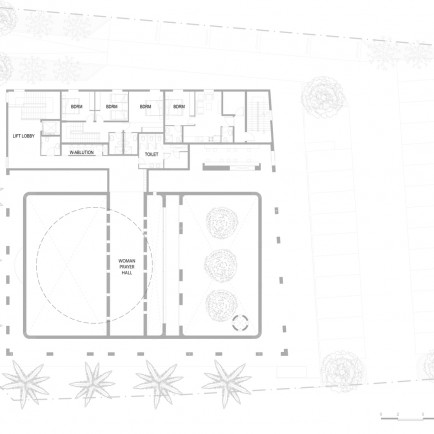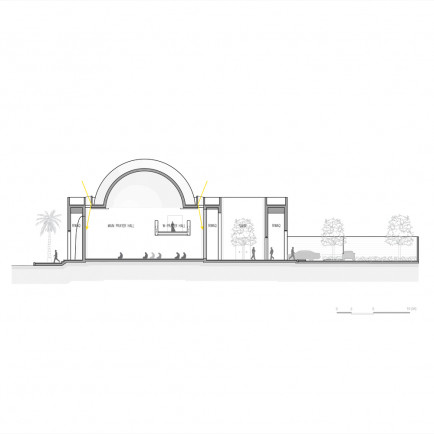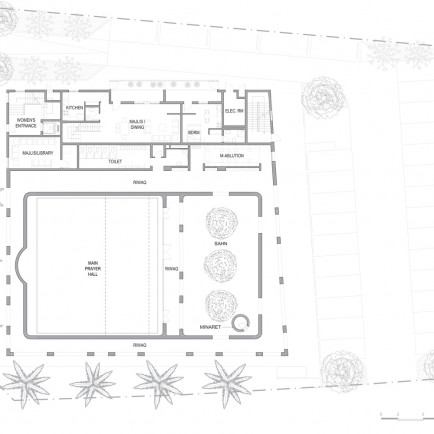Al Warqa’a Mosque
History
Designed with the intention of capturing the historical premise of a
mosque as a communal space for worship, Al Warqa’a Mosque is a structure that
also functions as a gathering place for the community. With the proliferation
of the iconic Turkish Central Dome mosque typology in the UAE, the architects
sought to return to a simpler design that is less focused on the mosque as an
icon, and more as a social space.
Al Warqa’a Mosque echoes the spatial simplicity of Prophet Muhammad’s
7th-century house in Medina, which is considered the first mosque in history.
In what came to be known as the Arab Hypo style typology, the original mosque
structure was distinguished by an open courtyard surrounded by rooms supported
by columns. The design approach behind this layout was influenced by an
understanding of the mosque as a multi functional space for the community to
congregate and socialize in after prayer; in this way it is seen as an
extension of its immediate environment.
Urban and Architectural
Ibda’s integration of this concept in Al Warqa’a Mosque can be seen in the seamless transition into the space from the outside; with no boundary wall defining the premises of the mosque, worshippers can enter the mosque from three different sides of the riwaq (hallway) surrounding the prayer hall.
This increased
accessibility creates an oasis-like effect that emphasizes the notion of the
mosque as a communal space. Defining access into the haram (holy space)through
the sahn (courtyard) is designed to create a spatial shift that gradually takes
worshippers from the busy street environment to the serene space of worship
through a series of playful and inviting arches. The sahn also serves the
functional purpose of allowing more space for people to pray during Friday
prayers or other high traffic seasons such as the holy month of Ramadan and the
two Eids.
Description
Upon entering the sahn, worshippers are met with a
striking minaret structure located at the corner of the courtyard. Designed as
a white free standing element that is adorned with patterns, the minaret
becomes a unique amalgamation of minimalist and traditional influences. Beyond
the sahn, the interior of the mosque is an intimate, yet brightly lit space
that is uninterrupted by columns - usually a facet of the larger mosques
prevalent in the region. Demarcated by a floating bridge that intersects the
space, the women’s prayer hall is at once private and contained within the
uniformity of the haram.
The sensitive treatment of the women’s area is in
contrast with many such spaces in other mosques in which the women’s prayer
hall is segregated to a large degree, typically relegated to the rear mezzanine
level or in closed rooms altogether. The bridge structure also insures that
there is no sound obstruction or delay during congregational prayer times or
khutbas (sermons).
Conceptually and spatially, the architects incorporated the theme of light both
as a physical component and a spiritual element in the design of the mosque. An
emphasis on natural light is created through a skylight that wraps around the
entire space, producing a diffused effect that gives the interior an ethereal
sense of brightness. Light also plays another role. It serves to call attention
to the movement of the sun as a catalyst in the changing prayer times, the
constant motion becoming a visual reflection of their daily cycle.
This concept of motion is additionally integrated
into the pattern design in the mosque. Based on an abstracted flower relief, an
alternating pattern of openings on one side of the floating bridge creates an
intricate play of light and shadow that further underlines the notion of
movement and change in prayer times.
The materiality and design of the Al Warqa’a Mosque reflects a mindfulness to
the locality of the structure. Using Saudi Sandstone for the external façade,
the mosque becomes an extension of the desert environment it is located in. The
sandy outer façade contrasted with the stark white interior of the mosque
reinforces the notion of the mosque as a sanctuary in the neighborhood – a type
of retreat from the harsh elements of the material world.
Details
Location
Al Warqa 1, Dubai - United Arab Emirates
Worshippers
1000
Architect Name
Year of Build
2016
Area
1400 sqm
Drawings
Map
History
Designed with the intention of capturing the historical premise of a
mosque as a communal space for worship, Al Warqa’a Mosque is a structure that
also functions as a gathering place for the community. With the proliferation
of the iconic Turkish Central Dome mosque typology in the UAE, the architects
sought to return to a simpler design that is less focused on the mosque as an
icon, and more as a social space.
Al Warqa’a Mosque echoes the spatial simplicity of Prophet Muhammad’s
7th-century house in Medina, which is considered the first mosque in history.
In what came to be known as the Arab Hypo style typology, the original mosque
structure was distinguished by an open courtyard surrounded by rooms supported
by columns. The design approach behind this layout was influenced by an
understanding of the mosque as a multi functional space for the community to
congregate and socialize in after prayer; in this way it is seen as an
extension of its immediate environment.
Urban and Architectural
Ibda’s integration of this concept in Al Warqa’a Mosque can be seen in the seamless transition into the space from the outside; with no boundary wall defining the premises of the mosque, worshippers can enter the mosque from three different sides of the riwaq (hallway) surrounding the prayer hall.
This increased
accessibility creates an oasis-like effect that emphasizes the notion of the
mosque as a communal space. Defining access into the haram (holy space)through
the sahn (courtyard) is designed to create a spatial shift that gradually takes
worshippers from the busy street environment to the serene space of worship
through a series of playful and inviting arches. The sahn also serves the
functional purpose of allowing more space for people to pray during Friday
prayers or other high traffic seasons such as the holy month of Ramadan and the
two Eids.
Description
Upon entering the sahn, worshippers are met with a
striking minaret structure located at the corner of the courtyard. Designed as
a white free standing element that is adorned with patterns, the minaret
becomes a unique amalgamation of minimalist and traditional influences. Beyond
the sahn, the interior of the mosque is an intimate, yet brightly lit space
that is uninterrupted by columns - usually a facet of the larger mosques
prevalent in the region. Demarcated by a floating bridge that intersects the
space, the women’s prayer hall is at once private and contained within the
uniformity of the haram.
The sensitive treatment of the women’s area is in
contrast with many such spaces in other mosques in which the women’s prayer
hall is segregated to a large degree, typically relegated to the rear mezzanine
level or in closed rooms altogether. The bridge structure also insures that
there is no sound obstruction or delay during congregational prayer times or
khutbas (sermons).
Conceptually and spatially, the architects incorporated the theme of light both
as a physical component and a spiritual element in the design of the mosque. An
emphasis on natural light is created through a skylight that wraps around the
entire space, producing a diffused effect that gives the interior an ethereal
sense of brightness. Light also plays another role. It serves to call attention
to the movement of the sun as a catalyst in the changing prayer times, the
constant motion becoming a visual reflection of their daily cycle.
This concept of motion is additionally integrated
into the pattern design in the mosque. Based on an abstracted flower relief, an
alternating pattern of openings on one side of the floating bridge creates an
intricate play of light and shadow that further underlines the notion of
movement and change in prayer times.
The materiality and design of the Al Warqa’a Mosque reflects a mindfulness to
the locality of the structure. Using Saudi Sandstone for the external façade,
the mosque becomes an extension of the desert environment it is located in. The
sandy outer façade contrasted with the stark white interior of the mosque
reinforces the notion of the mosque as a sanctuary in the neighborhood – a type
of retreat from the harsh elements of the material world.


